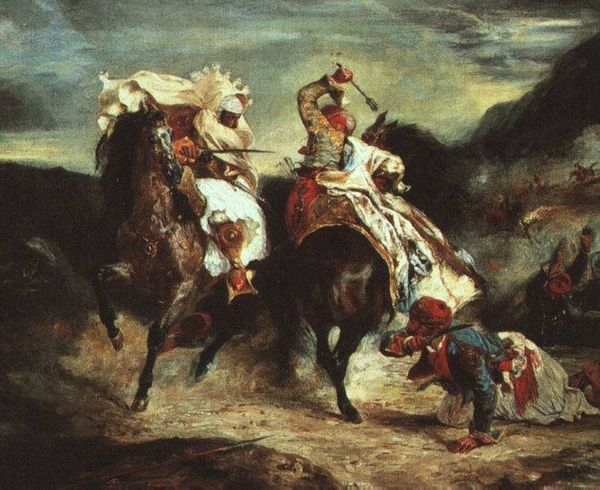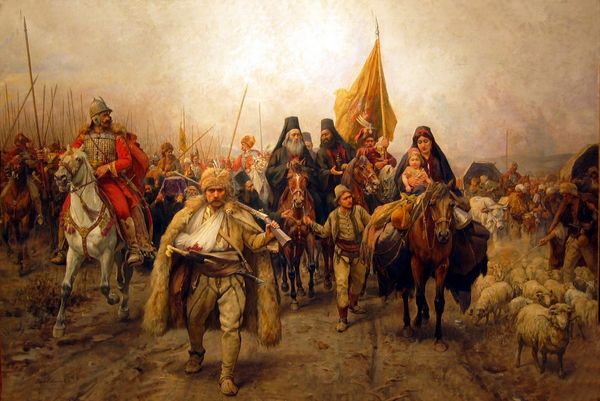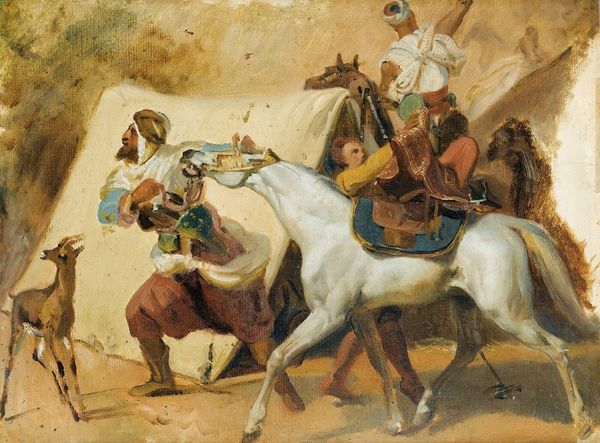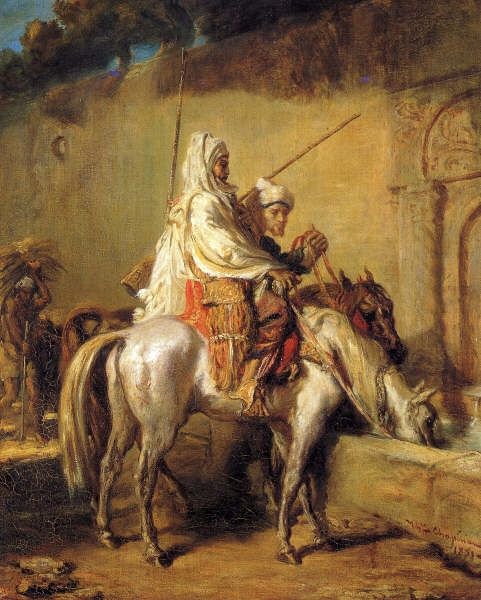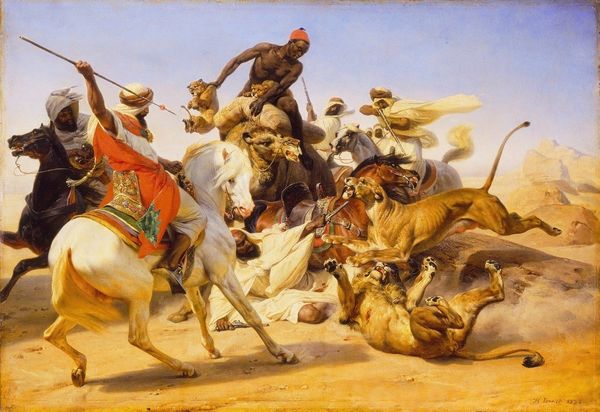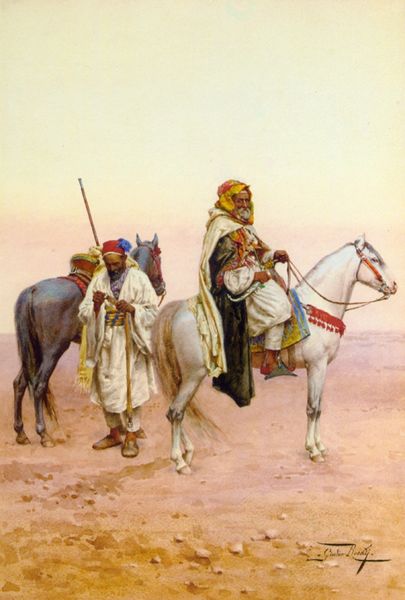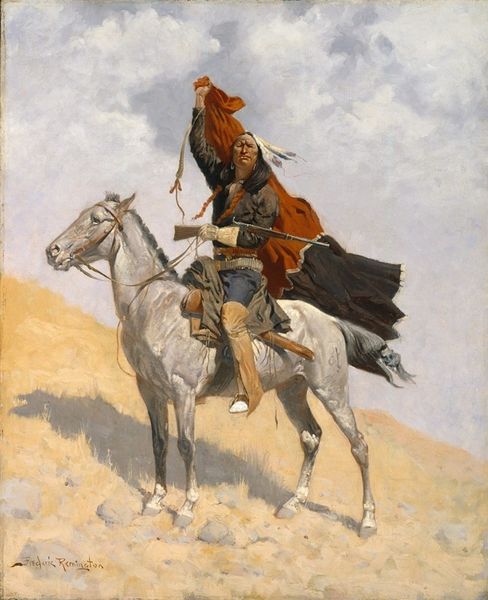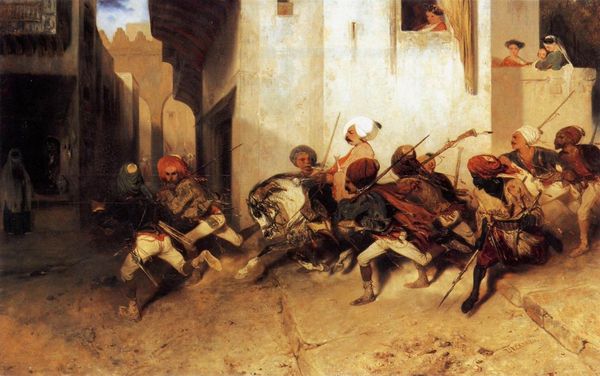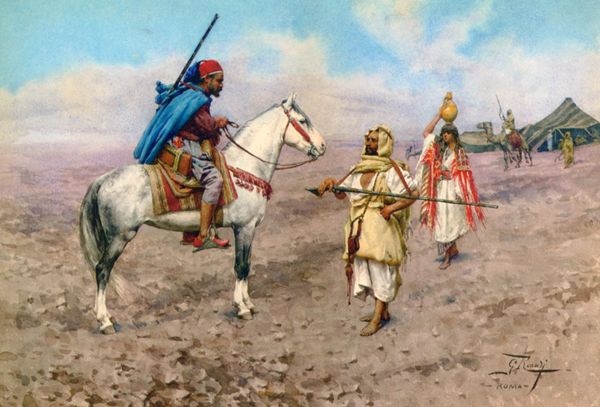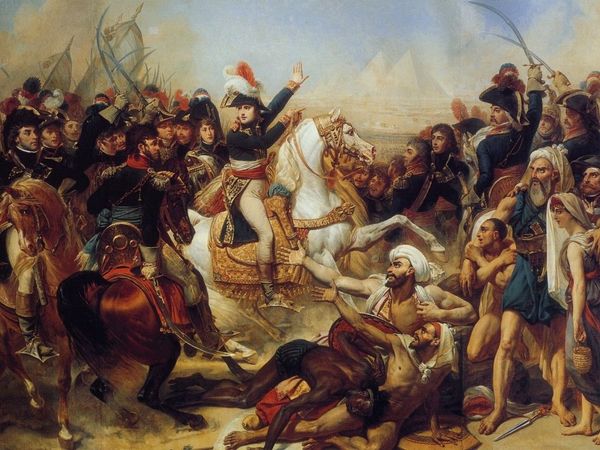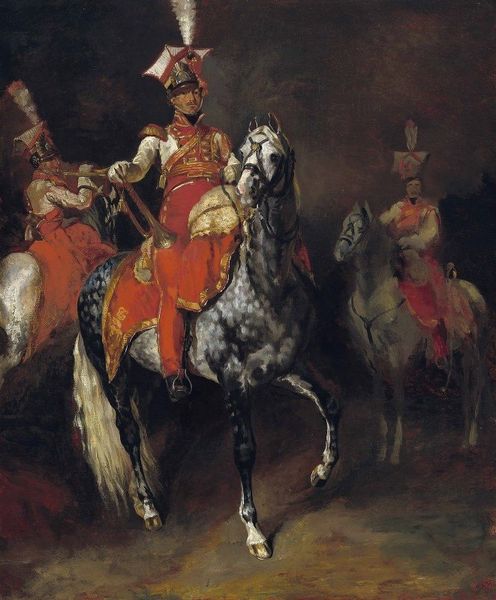
Ali Ben-Hamet, Caliph of Constantine and Chief of the Haractas, Followed by his Escort 1845
0:00
0:00
painting, oil-paint
#
portrait
#
painting
#
oil-paint
#
oil painting
#
group-portraits
#
romanticism
#
orientalism
#
mythology
#
genre-painting
#
history-painting
#
facial portrait
#
academic-art
#
portrait art
#
fine art portrait
Copyright: Public domain
Curator: Looking at Chassériau's painting "Ali Ben-Hamet, Caliph of Constantine and Chief of the Haractas, Followed by his Escort", dating to 1845, the scene is immediately striking. A confident leader, powerfully depicted on horseback with his entourage, really conveys an air of authority. What's your take? Editor: My first impression? I see a portrait steeped in orientalist tropes and a depiction of power dynamics during a period of colonial expansion. The painting’s mood feels carefully constructed, bordering on propagandistic. The Caliph, elevated and centered, becomes a figure through whom French imperial power might imagine itself reflected. Curator: That's a valid point, especially considering how French colonial ambitions played out in Algeria during that era. However, Chassériau himself had a complex relationship with this subject matter. He was deeply influenced by his travels in Algeria and sought, in some ways, to bridge cultural divides, but, yes, it is still impossible to overlook the structures of power inscribed in it. Editor: Exactly! And that’s why situating this within the social and political history is crucial. Chassériau presents us not merely with an image but also with a set of representational strategies – idealized figures, dramatic lighting, the overall air of exoticism – all serving to construct the Orient as something easily consumed by the European gaze. We should question the politics of such visual strategies. Curator: Agreed. Analyzing the composition, it's undeniable that Chassériau uses classical artistic conventions to ennoble Ali Ben-Hamet and his escort. There’s a theatricality to the scene; the arrangement of the figures suggests a meticulously staged performance. Editor: Absolutely, and that very staging should give us pause. The Caliph's assured gaze and elegant attire position him as a subject of both curiosity and control for a French audience. What looks like admiration might instead be a form of appropriation. The painting serves as a vehicle for disseminating specific understandings of cultural difference, and of dominance. Curator: This has broadened my appreciation. Considering both Chassériau’s artistic skills and the prevailing cultural context helps us grasp how art could, consciously or not, perpetuate specific social and political agendas. Editor: And for me, recognizing how an artwork is received is often as important as its creation, since we're reckoning with this image today, what does it communicate about historical relationships of power?
Comments
No comments
Be the first to comment and join the conversation on the ultimate creative platform.

